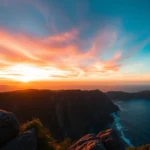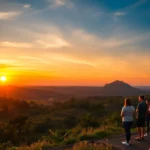Introduction to Lombok: Indonesia’s Unseen Paradise
Nestled in the heart of Indonesia’s diverse archipelago, Lombok stands out as a captivating destination that offers a harmonious blend of natural beauty, rich culture, and adventurous spirit. Often overshadowed by nearby Bali, Lombok is an island that promises travelers an authentic experience rooted in untouched landscapes, vibrant traditions, and a welcoming local community. For those seeking a destination that combines tranquility with excitement, Lombok emerges as a compelling choice. If you’re planning a journey, explore more about this stunning island on its official website Lombok to get comprehensive insights and travel tips.
Overview of Lombok’s Geography and Culture
Geographically, Lombok forms part of the Lesser Sunda Islands, situated east of Bali and separated by the Lombok Strait, which acts as a natural boundary. Covering an area of approximately 4,700 square kilometers, the island boasts a diverse topography that ranges from coastal plains to volcanic highlands. The island’s western and southern coasts are renowned for pristine beaches and excellent surf spots, while the central region is dominated by the towering Mount Rinjani, Indonesia’s second-highest volcano, standing at 3,726 meters.
The island is divided into several administrative regions, including Lombok Barat, Lombok Tengah, Lombok Utara, and Lombok Timur, each with unique attractions and cultural identities. Lombok’s culture is deeply rooted in Sasak traditions, which are reflected in everyday life, architecture, dance, and craftwork. The Sasak people are known for their vibrant textiles, intricate woodcarvings, and traditional ceremonies that have been preserved over centuries, offering visitors a glimpse into indigenous rituals and beliefs.
Coral reefs, lush rainforests, and terraced rice paddies further characterize the landscape, providing a fertile ground for eco-tourism and sustainable development initiatives that aim to preserve the island’s natural and cultural heritage.
Historical and Cultural Significance of Lombok
Lombok has a storied history that predates colonial influences, with evidence of ancient kingdoms and maritime trade routes linking it to broader Asian and Indian civilizations. The island has historically been a hub for Sasak culture and Islam, which is now the predominant religion among its inhabitants. Its historical sites include old mosques, traditional villages, and archaeological remains that tell the story of Lombok’s spiritual and social evolution.
Significant cultural practices, such as the *Bau Nyale* festival—an annual event celebrating the sea worms believed to be the reincarnation of a princess—highlight the deep connection between the Sasak people and their environment. This festival combines ritualistic swimming, communal feasting, and traditional dance, drawing both locals and tourists to experience Lombok’s vibrant cultural tapestry.
Additionally, Lombok’s architecture, with its open-air Balinese-style temples and Sasak traditional houses, showcases a harmonious blend of indigenous and external influences, symbolizing the island’s openness and resilience through centuries of change.
What Makes Lombok Unique Compared to Other Islands
While popularly associated with Bali, Lombok distinguishes itself through its less commercialized, more authentic environment. Its unspoiled beaches, untouched forests, and fewer crowds provide a more immersive experience for travelers seeking tranquility and natural beauty. The island’s rugged terrain offers challenging hikes and adventures, unlike the more developed tourist areas of Bali.
Moreover, Lombok’s focus on eco-friendly tourism and cultural preservation sets it apart. Initiatives such as community-led homestays and sustainable surf resorts emphasize responsible travel, ensuring that natural and cultural resources are protected for future generations. The island also thrives on a diverse ecosystem, ranging from coral reefs conducive to world-class diving and snorkeling, to alpine landscapes perfect for trekking and mountain biking.
Its distinct cultural atmosphere, characterized by Sasak traditions, local markets, and authentic culinary experiences, provides a richer, less commercialized tapestry that appeals to conscious travelers and explorers seeking genuine interactions.
Natural Wonders of Lombok
Top Beaches and Surf Spots on Lombok
Lombok’s beaches are renowned for their powder-white sand, crystalline waters, and world-class surf. The southern coast, particularly around Kuta and Selong Belanak, offers excellent waves suitable for both beginners and advanced surfers. Gili Trawangan, Gili Air, and Gili Meno are small, idyllic islands just off Lombok’s northwest coast, famous for their vibrant marine life and crystal-clear waters, making them perfect for snorkeling, diving, and sunset cruises.
Mount Rinjani: Indonesia’s Iconic Volcano
Rinjani is not just a natural monument but an adventure destination that attracts hikers and nature enthusiasts worldwide. The Rinjani Trek, a challenging multi-day hike, offers panoramic views, hot springs, and the crater lake Segara Anak. This active volcano shapes Lombok’s landscape and offers an unparalleled experience of volcanic activity and lush highland ecosystems.
Hidden Waterfalls and Natural Reserves
Beyond its volcanoes, Lombok hosts numerous waterfalls, such as Sendang Gile and Tiu Kelep, nestled within rainforest-covered mountains. These waterfalls are accessible via scenic trekking trails and serve as serene retreats amidst dense foliage. The Sekotong and Gunung Rinjani National Parks are protected areas teeming with endangered species, lush flora, and fauna, emphasizing Lombok’s commitment to conservation and eco-tourism.
Must-Visit Destinations in Lombok
Gili Islands and Marine Life Adventures
The Gili Islands—Gili Trawangan, Gili Air, and Gili Meno—are quintessential tropical paradises offering diverse marine activities. Gili Trawangan is known for vibrant nightlife and surfing, while Gili Air offers a more relaxed vibe with opportunities for yoga and snorkeling. Gili Meno, the quietest of the three, appeals for tranquil beach lounging and turtle conservation efforts. These islands are UNESCO-recognized marine protected areas, home to vibrant coral reefs and abundant marine life, making them a must-see for divers and snorkelers alike.
Traditional Villages and Cultural Experiences
Venture into Sasak traditional villages such as Sade and Rambitan to observe and learn about indigenous weaving, pottery, and rituals. Here, visitors can participate in community-led workshops, witness traditional ceremonies, and purchase locally crafted textiles, supporting sustainable livelihoods. These villages serve as living museums, preserving Lombok’s ancestral ways of life amid modern influences.
Popular Tourist Spots and How to Explore Them
Besides natural sights, Lombok features attractions like Pink Beach, a rare coastal site with vividly colored sands, and the Malimbu Cliff, offering stunning sunset views over the islands. Transportation options include scooters, private cars, or guided tours, ensuring flexible exploration of the island’s myriad attractions. Tour operators also provide eco-conscious packages that combine adventure, culture, and environmental awareness for a holistic experience.
Activities and Experiences in Lombok
Adventure Tourism: Trekking, Water Sports, and Hiking
Adventurers flock to Lombok for its rugged terrains and watersports. Trekking Rinjani is the crown jewel, with routes suitable for various fitness levels, spanning from one to three days. Surfing hotspots like Desert Point and Ekas are prime destinations for professional and amateur surfers. Other activities include canyoning, mountain biking, and paddleboarding, all facilitated by local adventure companies committed to safety and sustainability.
Local Cuisine and Culinary Highlights
Lombok’s culinary scene reflects its cultural diversity, emphasizing fresh seafood, savory sambals, and traditional Sasak dishes. Signature dishes include *Sate Rembiga*, a spicy grilled meat skewer, and *Ayam Taliwang*, a fiery chicken dish notable for its bold flavors. Markets like Pasar Mandalika are perfect for discovering local street food, while beachfront cafes serve international and fusion cuisines prepared with locally sourced ingredients.
Festivals and Cultural Events You Shouldn’t Miss
The *Bau Nyale* festival, held annually around February-March, features coastal celebrations, sea rituals, and traditional dance, embodying the island’s spiritual connection to nature. Other festivals like the *Lombok International Arts Festival* showcase traditional music, dance, and handicrafts. Participating in these events provides immersive cultural insights and memorable experiences that deepen your appreciation for Lombok’s heritage.
Practical Tips for Traveling to Lombok
Best Time to Visit and Travel Seasons
The optimal time to visit Lombok is during the dry season from May to September, when the weather is sunny, and seas are calm—ideal for surfing, trekking, and beach activities. The rainy season, from November to April, sees higher humidity and frequent showers, but it can be a good time for verdant landscapes and fewer tourists.
Accommodation Options for Every Budget
Lombok offers a range of accommodations, from luxury resorts and boutique hotels to budget hostels and homestays. Coastal areas like Senggigi and Kuta cater to all preferences, with beachfront villas, eco-resorts, and traditional guesthouses. For authentic experiences, staying in Sasak villages can provide insights into local life, cultural hospitality, and sustainable tourism practices.
Transportation, Tourism Safety, and Local Etiquette
Getting around is convenient via scooters, private drivers, or organized tours. Road conditions vary, so it’s advisable to use reliable transportation providers. Respect local customs and dress modestly when visiting religious sites. Always follow safety guidelines during adventure activities, and seek reputable operators specializing in eco-friendly tourism. Understanding local etiquette, such as greeting with a smile and using polite language, fosters positive interactions and enriching experiences.





